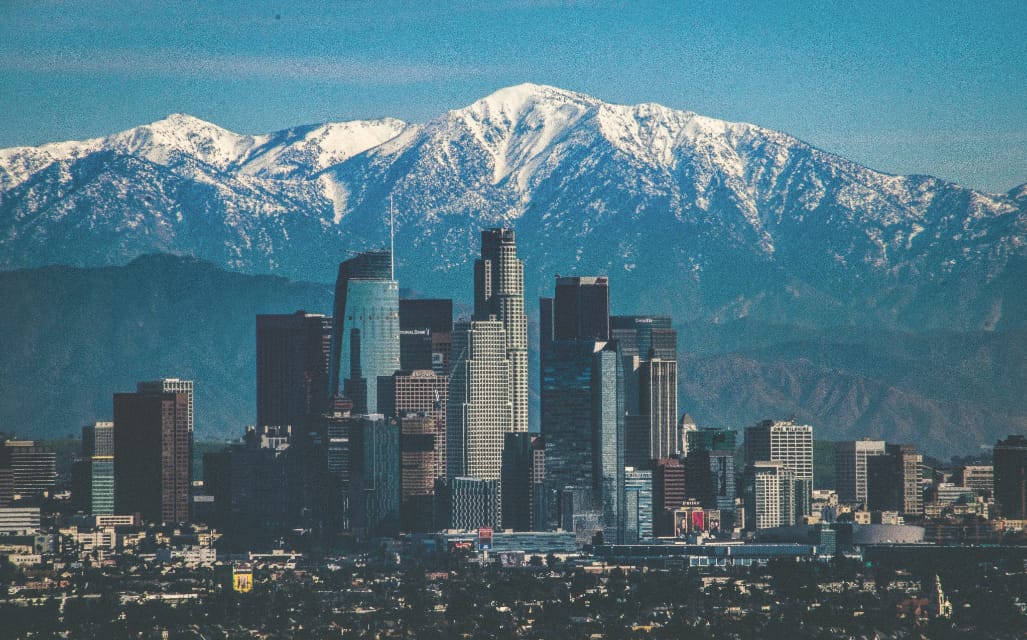
A seismogram of Japan’s 2011 M9.1 Tohoku earthquake. Creative commons. Courtesy Z22.
It’s been an active year for seismicity in Southern California. Starting with a M4.1 on New Year’s Day, 2024 is the shakiest year in the region’s history. Sunday night’s tremor near Ontario marks the fourteenth quake over magnitude 4.0, breaking the previous annual record of thirteen. There are twelve weeks left in 2024.
Following the 2019 Ridgecrest sequence, which broke Southern California’s seismic dry spell of twenty years, the area seems more prone to rock-and-rolling. Is that actually happening? Or is it just another page turning in California’s geologic history? Do the rumors of an imminent Big One hold any weight?
Los Angeles vs. San Francisco
No one would argue that our neighbors down south live in a different California. It’s a fact, all the way down into the crust of the Earth.
Imagine a broken dinner plate on the floor. You go to sweep it up. The pieces bunch and fold on top of one another, especially when you sweep them into the dustpan. Your broom is continental drift, the unstoppable force driving our tectonic plates, your dustpan the granite wall of the North American Plate. The chips and chunks of porcelain at your broom are pieces of the Pacific Plate grinding and piling up, forming mountains.

The snowcapped San Gabriel Mountains east of LA were built one earthquake at a time. Creative commons. Courtesy Salewskia.
Notice how the pieces come together. They thrust up and over, dip down and under; some slide past one another. That’s the situation underneath Los Angeles. LA sits atop a soup of silt, sand and oil, then a jumble of fragmented plate, constantly getting swept against the North American continent, always growing because of the crunch.
The land beneath the Bay Area moves differently. However, instead of porcelain chips, it’s more like broken glass. Picture an annealed glass pane, like you might find in a coffee table. Drop it face-down and shatter it. See how it breaks into shards that slide past one another if you sweep them? That’s the crust beneath San Francisco, and much of Northern California.
God I love talking about earthquakes. I’d have gone into seismology if numbers didn’t make my head hurt. I suppose writing about it will have to do, but I can’t help but wonder, am I the Carrie Bradshaw of earthquakes? OMG—what if the Big One moves to Paris?! Anyways,
Yes, there have been more earthquakes than “normal,” but:
What is normal? Are we asking from a human perspective or from the Earth’s point of view? On one hand, we could be speaking in terms of human lifespan. On the other, a timescale so grand in which our species has emerged but in the last millisecond. It’s an important distinction.
In the grand scheme of plate tectonics, Southern California’s ostensible uptick in seismic activity is insignificant. It wasn’t too long ago that tremors occurred with such regularity in Los Angeles, earthquakes became sort of blasé. You may know this scene from 1991’s L.A. Story starring the great Steve Martin:
The 1980s were an active decade for earthquakes in Southern California. The Whittier Narrows quake, a M5.9, killed four people and injured many more in 1987. The year before, a M6.0 took Palm Springs by surprise. A M5.7 rattled the Southlands in 1990. In 1991, five months after L.A. Story debuted, the M5.6 Sierra Madre quake ruptured a chunk of the fault involved in the deadly 1971 Sylmar quake. SoCal has seen a lot of fours this year, but it hasn’t been belted with fives yet.
Like Dr. Lucy Jones is getting tired of saying, tremors at this rate are actually normal. It’s the last twenty some-odd years of quietude that have been the exception.
This much activity? That’s true normal.
Earthquakes seem like isolated events but they aren’t. Every tremor means the fault is adjusting to yet more tectonic strain. Stress gets redistributed each time the ground moves. That means a single earthquake makes another nearby more likely. If it doesn’t happen, probabilities return to background rate, but if it does, it makes yet another more likely nearby.
That’s the reality. Earthquakes happen every day in California, most of which no one can feel. A palpable tremor means enough energy has been released that for up to a week, another may occur close by. It’s what Dr. Jones means when she says, “When you get a lot of earthquakes, you tend to get a lot of earthquakes.”
As for the Big One? It is just as likely as it was yesterday, with each year carrying about a seven percent chance of a M8.0 or larger in Southern California. The San Andreas Fault, the only fault in California capable of such a terror, lies 35 miles from downtown LA. This year’s earthquakes have largely occurred on subsidiary faults (Puente Hills, San Jacinto, etc.; see map).
All this shaking does get me thinking: has anyone noticed we haven’t had a quake in a while?
The post Hey, LA: What’s With All The Earthquakes? appeared first on Broke-Ass Stuart's Website.









